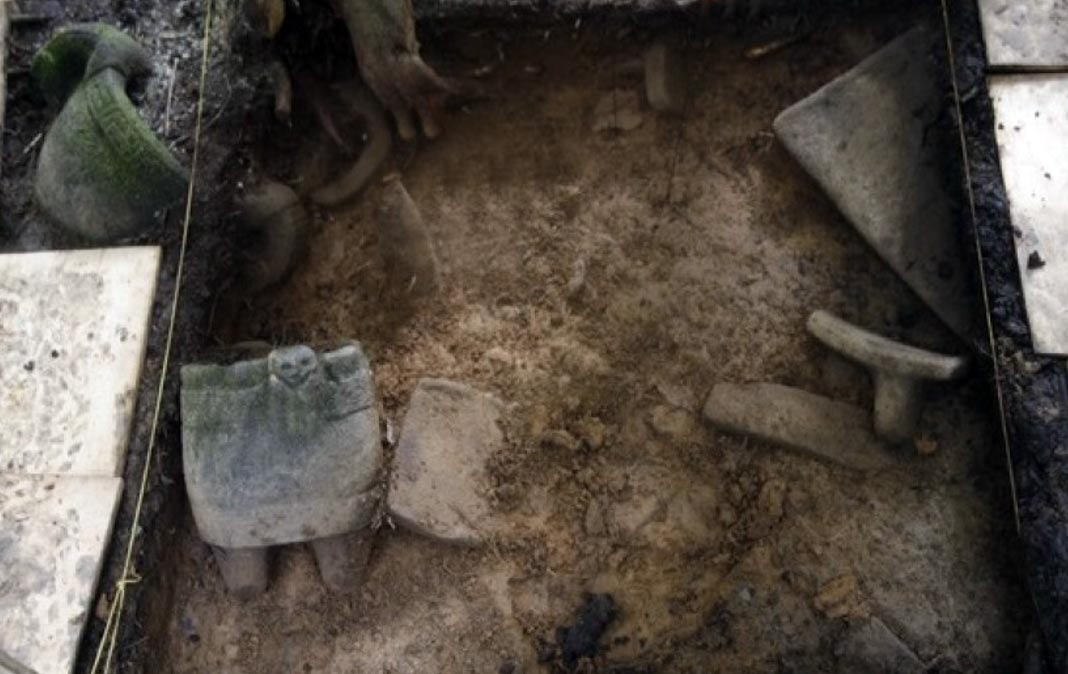New Discoveries at Ancient ‘White City’ Ruins in Honduras May Shed Light on Mysterious Civilization
Just three days into excavations at archaeological ruins in the jungle of Honduras - believed to be the legendary ‘White City’ – and researchers have already unearthed a dozen ancient artifacts which may serve to shed light on the mysterious civilization that once inhabited the region.
Two years ago, an aerial search of the dense jungle of Honduras fuelled by local legends of a lost ancient city, revealed miles of seemingly man-made features. Announcements quickly spread that archaeologists had found La Ciudad Blanca (“The White City”), otherwise known as “City of the Monkey God”. An initial ground expedition early last year dramatically revealed that aerial images did indeed show traces of a lost civilization, including extensive plazas, earthworks, mounds, an earthen pyramid, and dozens of finely carved artifacts belonging to a culture that is virtually unknown.
Earlier this week, the President of Honduras announced that scientists would finally begin exploring the ancient site, and initial results are proving to be just as exciting as anticipated.
The National Geographic reports that in just a few days, the archaeological team led by Chris Fisher of Colorado State University, dug up a dozen more artifacts including stone jars elaborately decorated with animal heads and geometric patterns, and ceremonial metates, which are thought to have been a type of throne.

An example of a ceremonial metate. This one is from the Nicoya culture of Costa Rica, 300 – 700 AD. (public domain)
“One of the metates is incised with a series of designs that archaeologists say seem to resemble those found in a Maya “sky band,” an abstract depiction of the night sky,” reports the National Geographic. “This could be a significant find, helping scientists to understand the connection between the largely unknown and unnamed culture of prehistoric Mosquitia and its powerful Maya neighbors to the west and north.”
The discovery of metates is highly promising as Fisher reports that in other parts of Central America, burials of high-status individuals, including royals, have been found beneath buried metates.
- Honduras to Begin Investigations of Ancient Jungle Ruins Believed to be the Legendary White City
- Ten Legendary Lost Cities that Have Emerged from the Past
- The Lost City of Z and the Mysterious Disappearance of Percy Fawcett
- Archaeologists find untouched ruins in their search for the Lost City of the Monkey God
Revealing Previously Discovered Artifacts for the First Time
In addition to the new discoveries, a number of artifacts discovered in February last year and guarded by the military ever since, have been removed from the site for the first time and transported by helicopter out of the jungle to the town of Catacamas, where the Hondurans are building a future museum to house and study the artifacts.
The President of Honduras, Juan Orlando Hernández, personally removed the first stone sculpture, a basalt vessel decorated with two animal figures, one of which may depict the head of a fer-de-lance, a deadly snake common to the area.
Fifty-two stone sculptures were discovered protruding out of the ground during the initial investigations last year. They had been deposited at the base of a pyramid in the center of the ancient city.
Previously discovered artifacts at the ancient ruins are removed from the site for the first time. Source: El Heraldo.
Legends of a Lost City
La Ciudad Blanca, or The White City, is a legendary city that was said to be located in the virgin rainforest of Mosquitia in eastern Honduras. Spanish conquistador Hernán Cortés reported hearing "trustworthy" information about the ancient ruins, but never located them. In 1927, pilot Charles Lindbergh reported seeing monuments constructed from white stone while flying over eastern Honduras.
By the 1930s, there were rumors of a place in Honduras called the "City of the Monkey God", which was equated with Ciudad Blanca, and in 1939 adventurer Theodore Morde claimed to have found it and brought thousands of artifacts back to the United States to prove it. According to Morde, the indigenous people said a giant statue of a monkey god was buried there. He never revealed the precise location of his find as he feared the site would be looted and died before returning to the site for a proper excavation.

Artist Virgil Finlay's conceptional drawing of Theodore Moore's "Lost City of the Monkey God". Originally published in The American Weekly, September 22, 1940 (Wikimedia Commons)
In 1952, explorer Tibor Sekelj searched for The White City on an expedition financed by the Ministry of Culture of Honduras, but returned empty handed. Investigations picked up pace in the 1990s following reports of the legend in popular media, and in 2012 the first significant discovery was made by aerial scanning.
Since then, Chris Fisher’s team has discovered an extensive complex made up of earthworks, plazas, pyramids, irrigation canals, reservoirs, mounds, and stone sculptures that have lain untouched since the city was abandoned centuries, perhaps even millennia, ago. The civilization that inhabited the city remains virtually unknown. Fisher’s team believes thousands of artifacts may lie buried beneath the surface. It is hoped that the new excavation may serve to shed light on this little known ancient culture.
Featured image: Newly discovered artifacts at ancient ruins in Honduras believed to be the legendary ‘White City’. Source: El Tiempo.
By: April Holloway





















Comments
I am particularly interested in Giants and Mayas
This find might well give validity to the mormons view of native history...
infinitesimal waveparticles comprise what we call home the earth
manipulatable by thought ability supressed in humans since birth